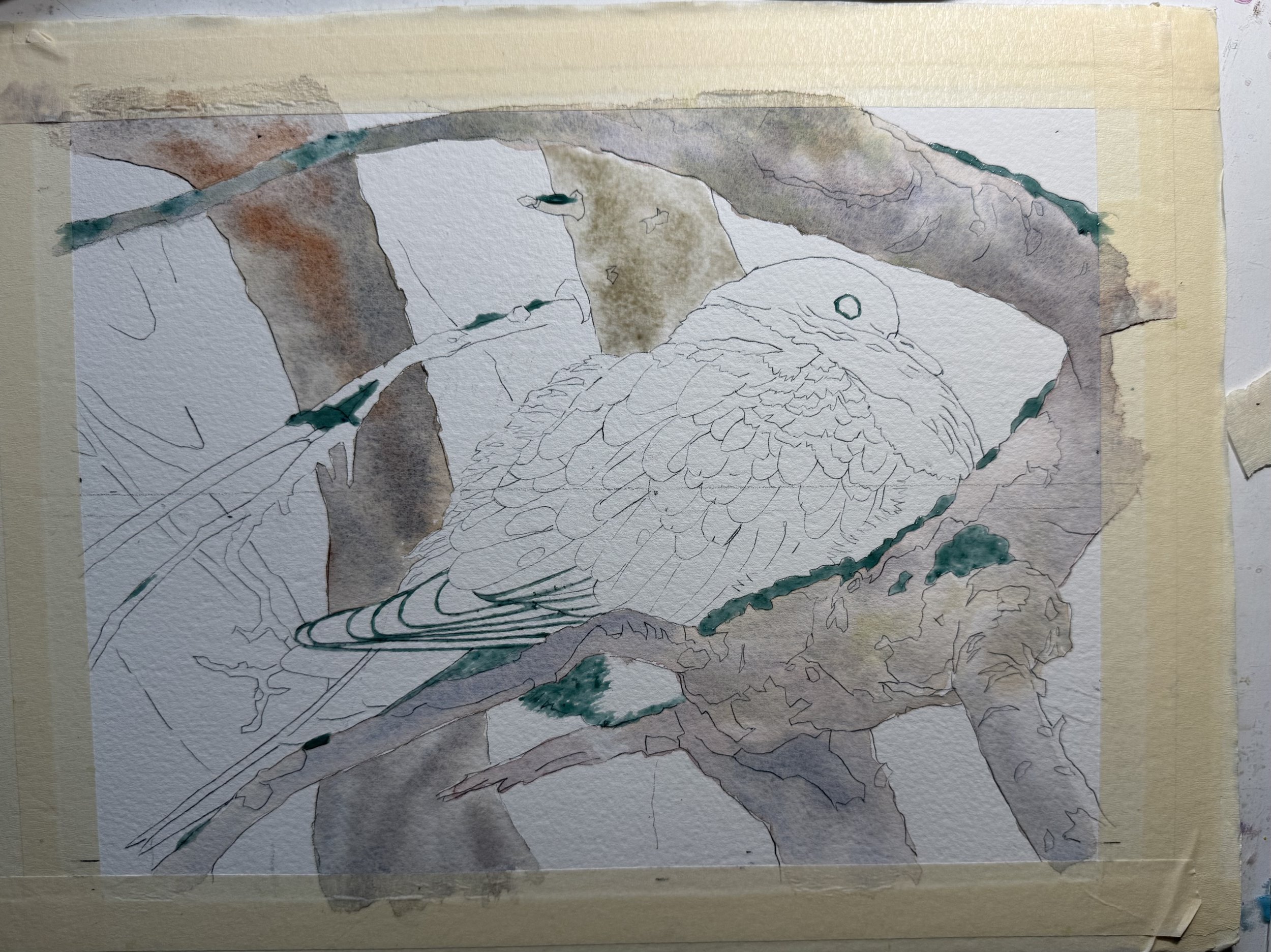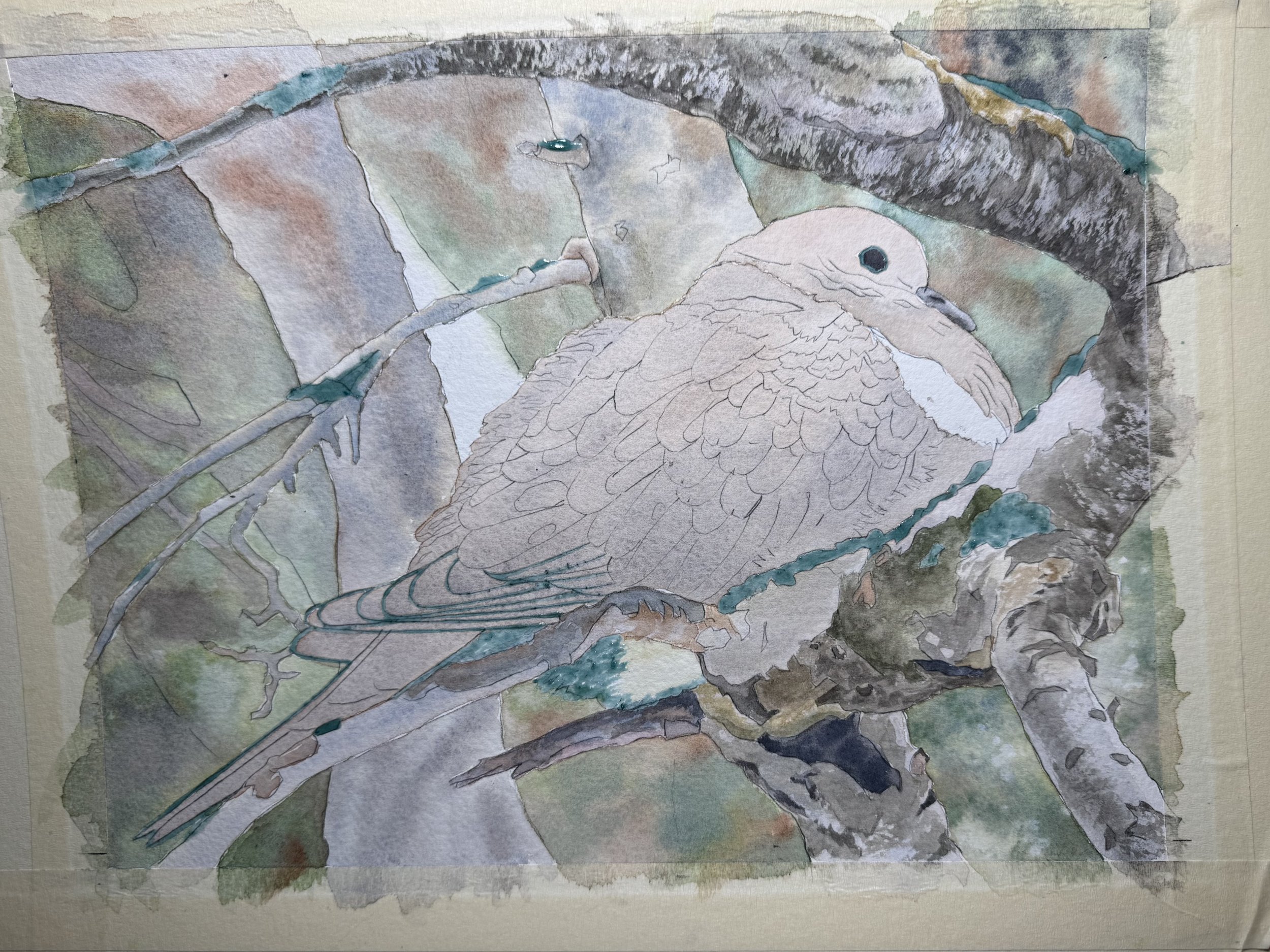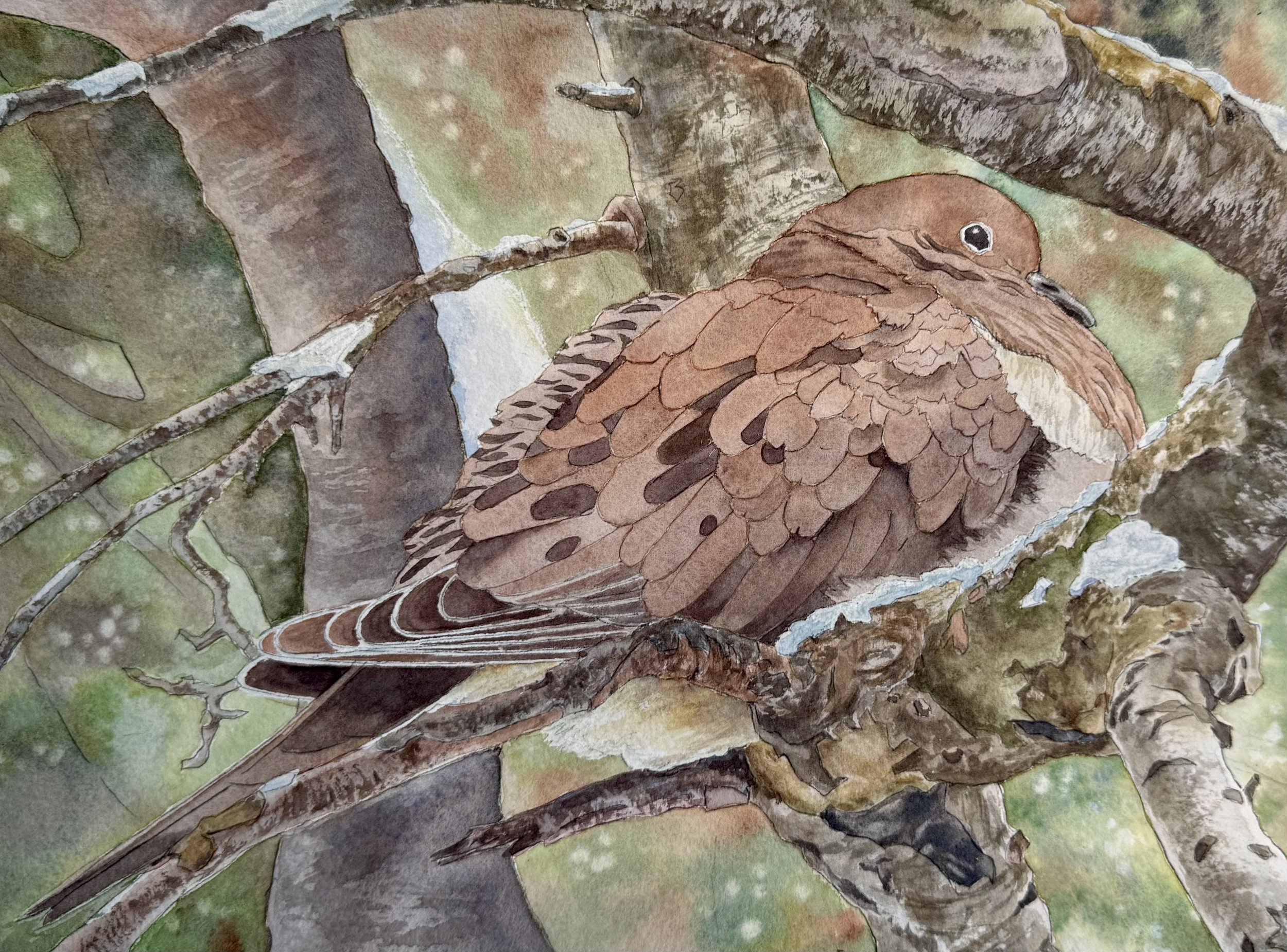The Mourning Dove | The Process | Eileen Hennemann
I was looking out the front window a few weeks ago. It was a very cold day and the birds were rapidly emptying the feeders that hung by the crabapple tree. The tree is almost within arm’s reach save for the glass between us. Otherwise I would try to pet the three mourning doves perched on the branches there. Fortunately they can’t really see me from the outdoor light reflection, so I could dash off to get my camera and take close-ups of them.
I do so love them. They are such a peaceful bird. They move silently beneath the tree, pecking at the ground for whatever seeds have fallen from the feeders above. Their cooo ~ cooo sounds are so welcome on a spring morning when the male is searching for a mate or building a nest. When they’re startled and take off they make a distinct sound called a wing whistle. You always know it was indeed a dove flying away.
I painted a dove that I had in the 2023 show and I think of it now and again. I’ll probably do the same with this one which will be in this year’s show. I love painting in watercolour and the medium especially complements the softness of the mourning dove.
Following are some of the steps taken to achieve what I felt represented my connection to that bird.
I first drew the scene (on 300lb Arches watercolour paper), used masking tape to create a border, and then applied masking liquid where I wanted the white paper to remain. That’s the dark green you see in the first three photos. Part of the appeal of this image was how well the dove was hidden, so I determined what blue, red, and browns should be on my pallet and how they would be mixed for the taupes, greens in this picture.
The distant background needs the touches of green and browns, but kept lighter than the similar colours that will eventually be used for the branches, and some of which will be on the dove.
Until now I am using wet backgrounds and a wet/thin pigment load in my brush. Time to start creating dimension. That was done by darkening the bark in areas using more pigment/less water. Once the paper was dry, I used the dry brush technique which works really well for bark. Little details of different textures along that branch were also applied. The dove now has her (she looks like a her) base coat.
The masking liquid has been removed. Slowly but surely each feather is painted separately, going from one side to the other so the wet paint doesn’t bleed into each other. The snow is given a shadow and work continues on the branches behind her. Each part of the painting is reviewed, addressed and enhanced, always by mixing pigment and determining how it needs to be handled.
I realized the furthest left branch had to be darker, the background green enhanced, and a tad more sienna added. I also like the effect of the little white dots in the background. There’s a name for that, and if you’re reading this and know that name, please tell me what that is!
This is almost the finished painting … I still have a few weeks to be sure that all is the way I want it to be.






